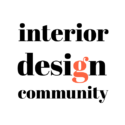
The interior design industry is a dazzling world of creativity, innovation, and transformation. Yet, beneath the surface of perfectly curated spaces lies an uncomfortable truth. A question recently posed to the community brought this issue to light:
“Why do we as a community let leaders in our industry continue to abuse their employees and exhibit bad behavior just because they create pretty rooms?”
This query isn’t just thought-provoking; it’s essential. While many designers and firms uphold professionalism and ethical standards, a subset exploits their power, leaving employees feeling undervalued, overworked, and disillusioned. The time to address this issue is now. A healthier, more respectful design industry benefits everyone, from entry-level designers to the most established firms.
Unpacking the Problem
The issue of toxic leadership in interior design is multi-faceted. Let’s examine the factors that contribute to this troubling trend:
1. Unethical Work Practices
From unpaid internships to inadequate wages, some leaders exploit young talent under the guise of “opportunity.” Designers who pour their creativity and time into projects often find themselves undercompensated and undervalued.
2. Abuse of Power
Toxic leadership can manifest in various ways—verbal abuse, unrealistic demands, or lack of recognition for employees’ contributions.
3. The Halo Effect
The ability to design breathtaking spaces often overshadows poor behavior. In many cases, designers with impeccable portfolios escape scrutiny for their actions because their work speaks louder than their conduct.
4. Absence of Accountability
Most design firms lack HR departments, leaving employees without a formal mechanism to report abuse or demand fair treatment.
Why Does This Behavior Persist?
1. The Industry’s Star Culture
In an industry that glorifies big names and “design celebrities,” bad behavior often goes unchecked. Those with significant social media followings or high-profile projects are frequently considered untouchable.
2. Fear of Retaliation
Emerging designers hesitate to speak out against influential leaders for fear of losing opportunities or being blacklisted.
3. The Perception of Scarcity
Many in the industry operate under the belief that good opportunities are limited. This perception creates a power imbalance, with employees feeling grateful for any opportunity, even under poor conditions.
Strategies to Combat Toxic Leadership
Addressing toxic leadership requires a shift in culture and actionable steps from individuals and organizations alike.
1. Build Transparent Workplaces
Firms must establish clear policies on pay, work expectations, and employee rights. Regular feedback sessions and anonymous reporting channels can ensure accountability.
2. Educate and Mentor
Experienced designers should focus on mentoring the next generation of talent. By sharing knowledge and fostering a supportive environment, they can help build a culture of respect and collaboration.
3. Hold Leaders Accountable
Whether it’s through industry forums, anonymous reviews, or direct conversations, it’s essential to call out problematic behavior. Silence only perpetuates the cycle.
4. Advocate for Fair Pay
Pay transparency is crucial for setting industry standards. Firms should adopt fair pay practices, ensuring that employees are compensated in line with their skills and contributions.
5. Establish Industry Standards
Professional organizations and design communities should develop and enforce codes of conduct. These standards can help regulate behavior and promote ethical practices.
Insights from the Community
Let’s hear from professionals within the industry who’ve shared their perspectives:
- @FinallySpoken:
“Design leaders need leadership training. Just because someone creates beautiful spaces doesn’t mean they’re equipped to lead a team. Toxicity thrives in environments without formal HR.” - @IDGreenlist:
“Unpaid internships should be illegal. Designers deserve fair compensation for their time and talent. Start by ensuring a minimum pay rate for all positions.” - @Waldron_Designs:
“It’s time to focus on professionalism. If someone’s behavior is unacceptable, we should collectively stop promoting and encouraging their work.”
These comments highlight the need for systemic change, from mentoring young talent to promoting fair pay practices.
How to Identify Toxic Leadership
It can be challenging to spot toxic leadership, especially in an industry that celebrates creativity and glamour. However, here are some red flags to watch for:
1. High Employee Turnover
A revolving door of employees often signals dissatisfaction and a toxic work environment.
2. Lack of Transparency
Unclear contracts, ambiguous job roles, and vague expectations can indicate an exploitative setup.
3. Unrealistic Demands
Constant overtime, unreachable goals, and an absence of boundaries often point to poor leadership.
4. Absence of Feedback
Leaders who dismiss employee concerns or fail to provide constructive feedback foster resentment and disengagement.
Creating a Positive Work Environment
A thriving design industry depends on fostering positive workplaces. Here are actionable steps for firms and individuals:
1. Set Clear Expectations
Job roles and responsibilities should be defined clearly, leaving no room for miscommunication.
2. Foster Open Communication
Encourage employees to voice concerns without fear of retaliation. Regular team check-ins can help build trust.
3. Celebrate Employee Contributions
Acknowledging the hard work of team members fosters a culture of appreciation and respect.
4. Provide Growth Opportunities
Offering training programs, mentorship, and skill-building opportunities can empower employees and promote loyalty.
How Employees Can Protect Themselves
For designers navigating toxic workplaces, self-preservation is key:
- Document Everything: Keep records of work hours, communications, and agreements to protect yourself in case of disputes.
- Set Boundaries: Clearly communicate your limits regarding workload and hours.
- Seek Support: Join professional organizations or communities for guidance and advocacy.
- Consider Leaving: If a workplace is affecting your well-being, it’s okay to move on. Your health and happiness should always come first.
The Role of Social Media
Social media has amplified the visibility of designers and their work, but it’s also contributed to the problem. Many so-called “leaders” are more focused on self-promotion than fostering industry growth. To counteract this:
- Follow and support designers who exhibit professionalism and kindness.
- Call out bad behavior when it’s evident.
- Promote positive examples of leadership and collaboration.
A Call to Action
Change begins with all of us. By speaking up against toxic leadership, advocating for fair treatment, and fostering supportive environments, we can elevate the interior design industry to new heights.
What’s Your Take?
Have you encountered toxic leadership in your career? Share your experiences and ideas for change in the comments below. Together, we can create a brighter future for the design industry.


Totally agree on so many levels!
I believe that in order for your creative employees to thrive they need to be seen and heard. They also need to feel safe in order to be able to share their creativity.
Thanks Christina! See you in Vegas!